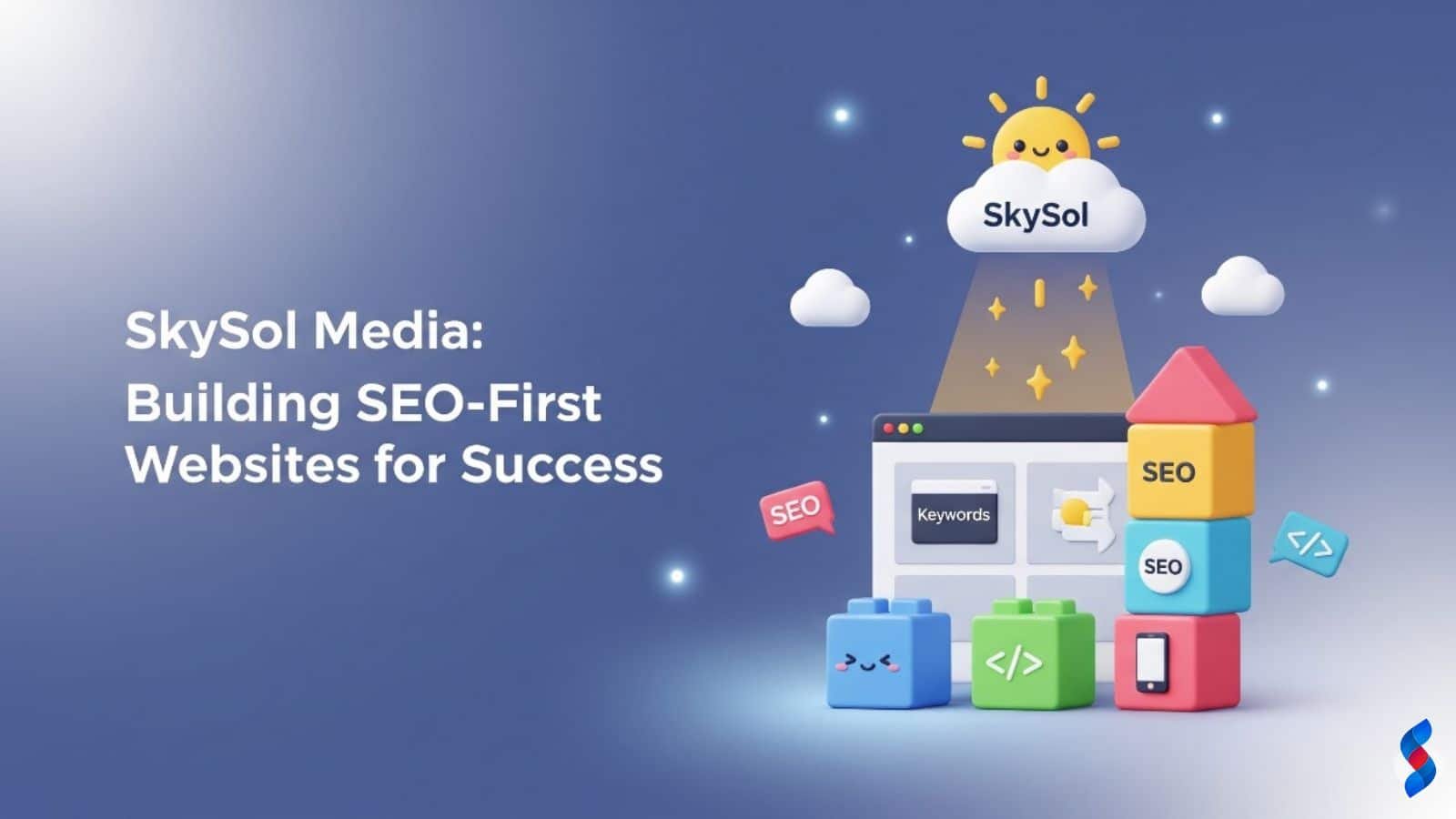Need help? Call us:
+92 320 1516 585
- Web Design And Development
- Graphic Designing
- Search Engine Optimization
- Web Hosting
- Digital Marketing
- CRO Services
- Brand Development
- Social Media Marketing
- PPC Marketing
- Content Marketing
- ERP Solutions
- App Development
- Game Development
- Printing Services
- Video Production
- Artificial Intelligence
- Data Entry
How to Write SEO-Friendly Blog Posts That Google Loves
In today’s digital world, simply writing a blog post isn’t enough. To stand out online, your content must be SEO-friendly, structured not only to engage…

In today’s digital world, simply writing a blog post isn’t enough. To stand out online, your content must be SEO-friendly, structured not only to engage readers but also to perform well in Google’s search rankings. At SkySol Media, we’ve mastered the art of creating blog content that ranks, engages, and converts.
In this comprehensive guide, we’ll walk you through how to write SEO-friendly blog posts that Google loves, using ethical practices and industry best standards for sustainable growth.
What Does “SEO-Friendly” Mean?
An SEO-friendly blog post is one that is optimized for both users and search engines. It includes relevant keywords, a clear structure, internal and external links, and high-quality content that provides real value. But it’s more than just keyword stuffing—it’s about understanding user intent and delivering helpful, engaging, and responsible content.
Read Also: Boost Your Google Rankings: Proven SEO Tactics for Modern Brands
Why SEO Matters for Blogging
Search engines like Google are the primary traffic source for most blogs. With over 8.5 billion searches made daily on Google, ranking high can bring in targeted organic traffic, improve brand visibility, and build long-term authority in your niche.
At SkySol Media, we prioritize white-hat SEO strategies to ensure long-lasting results and avoid penalties from Google’s algorithms.
Step-by-Step Guide to Writing SEO-Friendly Blog Posts
1. Start with Keyword Research
Keyword research is the foundation of SEO. Use tools like:
- Google Keyword Planner
- Ubersuggest
- Ahrefs
- SEMrush
Look for long-tail keywords (e.g., “how to write SEO blog posts for small business”) with high relevance and medium-to-low competition.
Example: For this post, keywords like “SEO-friendly blog posts,” “write SEO content,” and “Google SEO blog writing” are strategically integrated.
2. Structure Your Blog for Readability
Google, and your readers, love clear, organized content. Use:
- H1 for the main title
- H2 for subheadings
- H3 for additional breakdowns
- Bullet points and numbered lists
- Short paragraphs (2–4 lines max)
This improves readability and helps search engines understand your content.
3. Write a Powerful, Keyword-Optimized Title
Your blog title should:
- Include your primary keyword
- Be under 60 characters
- Capture attention
Example: “How to Write SEO-Friendly Blog Posts That Google Loves” includes the main keyword and tells readers exactly what they’ll learn.
4. Craft a Compelling Meta Description
The meta description appears in search results and influences click-through rates. Keep it:
- Between 150–160 characters
- Actionable
- Keyword-rich
Meta Example: “Discover how to write SEO-friendly blog posts that Google loves. Learn practical tips from the experts at SkySol Media.”
5. Use Keywords Naturally
Avoid keyword stuffing. Instead, follow these best practices:
- Use main keyword in the first 100 words
- Include synonyms and LSI keywords
- Add keywords in headings, URL, and meta tags
Tip: Always write for humans first, Google second.
6. Internal and External Linking
Linking adds value and supports SEO.
- Internal links: Guide readers to other relevant content on your site.
- External links: Reference authoritative sources (e.g., Moz, Google Blog) to build credibility.
Example: Learn more about our Full-Stack Digital Marketing Services at SkySol Media.
7. Use Optimized Images with Alt Text
Images enhance readability and SEO:
- Compress for fast loading
- Use relevant filenames (e.g., seo-blog-writing.jpg)
- Add alt tags with descriptive keywords
Alt text also improves accessibility for visually impaired users.
8. Make Your Blog Mobile-Friendly
With over 60% of traffic coming from mobile, your blog must be:
- Responsive across all devices
- Fast-loading (under 3 seconds)
- Easy to navigate
Google uses mobile-first indexing, so this directly impacts your rankings.
9. Update Content Regularly
Google favors fresh content. Revisit older blogs to:
- Update stats
- Fix broken links
- Add new insights
SkySol Media runs content audits every quarter to ensure our blogs stay relevant and SEO-compliant.
10. Track Performance with Analytics
Use Google Analytics and Google Search Console to:
- Monitor traffic
- Track keyword rankings
- Identify bounce rates and user behavior
This helps you adjust and optimize for better results over time.

Responsible Blogging: Ethics First
At SkySol Media, we believe SEO isn’t just about rankings—it’s about trust. Here’s how we write responsibly:
- Fact-checking: We cite credible sources and avoid misinformation.
- Avoid clickbait: Our titles reflect actual content.
- Respect for user privacy: We follow GDPR and data protection best practices.
- Diversity and inclusion: Our content reflects different perspectives and backgrounds.
We advocate for transparent content marketing that prioritizes the user’s best interest.
Bonus: SkySol Media’s 5 Content Writing Tools You’ll Love
Here are some of the tools our content team uses to create SEO-rich blog posts:
- Grammarly – For grammar and clarity
- Surfer SEO – For SEO optimization and keyword density
- Hemingway App – To improve readability
- Yoast SEO Plugin – For WordPress SEO management
- AnswerThePublic – For finding content questions and search intent
Final Thoughts
Creating SEO-friendly blog posts that Google loves is a strategic blend of content quality, user experience, and ethical SEO practices. At SkySol Media, we go beyond algorithms—we focus on authentic engagement and value-driven content that builds authority and drives growth.
If you’re ready to transform your blog into a Google-friendly powerhouse, get in touch with SkySol Media. We’re here to help you write smarter, rank higher, and convert better.
Don’t forget to share it
Table of Contents

We’ll Design & Develop a Professional Website Tailored to Your Brand
Enjoy this post? Join our newsletter
Newsletter
Related Articles
The Ultimate SEO Guide for Growing Your Trading Business Online
Drive More Organic Traffic to Your Trading Platform with These Proven Tactics
Optimized for Success: How SkySol Media Builds SEO-First Websites
Boost Your Google Rankings: Proven SEO Tactics for Modern Brands
SEO for Blog Posts: What Google Wants in 2025-26
This website uses cookies to improve your experience.
By using this website you agree to our Privacy Policy.






